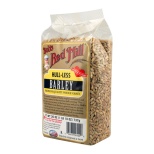Take mom’s advice about high albedo crops
Remember in the summer when your mom used to tell you not to run on the black top barefoot? Or when she advised that you should wear a white t-shirt in 90 degree weather even though your favorite shirt was black?
Mom wasn’t just saying this because of folklore or because moms sometimes say things that don’t have any logic. She was using her knowledge of the albedo effect to protect your little temperature sensitive body.
What albedo means is the percentage of light (or incandescent electromagnetic radiation, which ever you prefer) reflected by a surface, usually a celestial body. But this knowledge of light reflection off different surfaces helps us in a lot of different situations.
We know that black absorbs more light and white reflects more light. That’s why the pads of our feet might get burned walking barefoot on a blacktop, no concrete and why it’s more comfortable to wear a white shirt rather than your fav black shirt in the heat.
Researchers at the University of Bristol are taking this age old mom logic and applying it to the field of geoengineering.
In the team’s 2009 study, Assessing the Benefits of Crop Albedo Bio-Engineering, they found that if farmers were able to switch their crops to higher albedo varieties then the planet could be globally cooled by one percent.
I know…that sounds really small and like a lot of work for farmers but the study states that this crop switch-a-roo could have a greater effect locally and regionally.
The high albedo crops would consist of different varieties of maize and wheat along with barley and millet.
Also, high albedo crops have additional benefits. These plants tend to have greater water efficiency and reduced leaf heating so overall, they could increase agricultural productivity.
Even though this study was written in 2009, large global geoengineering projects are something to consider. I picked this one in particular to write about because it seems more reasonable than mining moon dust or ocean sulfur enhancement.
With rapidly changing temperatures, farmers and crop growers may have to think back to what mom said and change up their system.
Where I got my info from:
http://www.bitsofscience.org/crop-albedo-geoengineering-1082/





